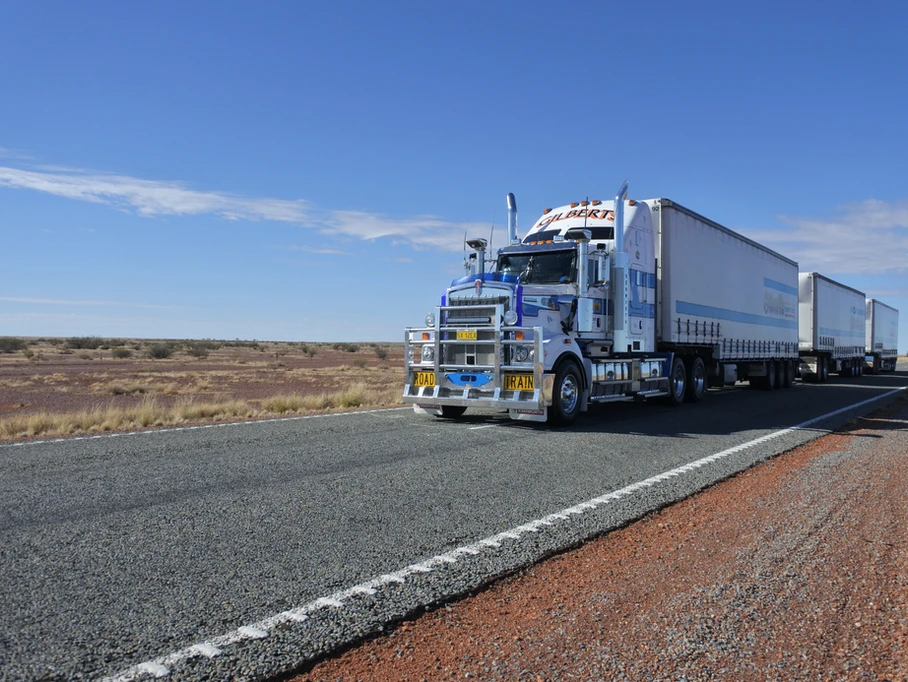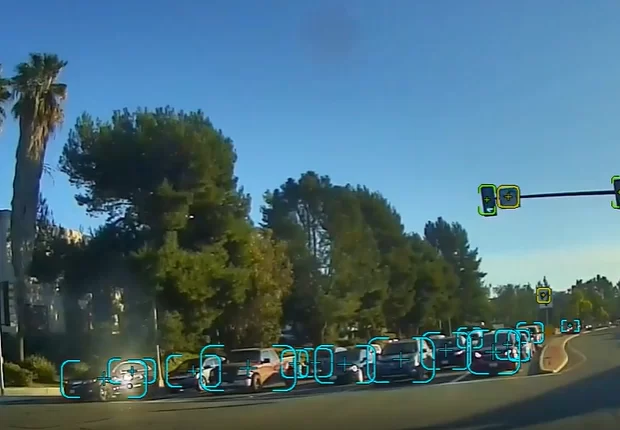
Urban streets vs Rural roads, which is a bigger threat?
Urban streets and rural roads are two different beasts, especially for the fleet driver. Even for everyday drivers like myself, I loathe routing through packed urban streets, where everyone is in a rush and the lanes are very claustrophobic. But then just thinking about rural roads and long road trips makes me flirt with slumber wherever I am.
Now, imagine that for a fleet driver, hauling tons of cargo and completing long trips in both environments daily. It is hard to confidently decide which is harder for them and which is less safe. Having big trucks deliver necessary items to stores in packed streets, through tight turns and cramped spaces—where often drivers must cone off areas and hope the drivers comply—is a nightmare. But on the other side, seeing the same shade of green on hour twelve and day five of driving likewise poses major threats to fleet safety. So, which is riskier, and how can fleet drivers approach both environments to stay as safe as possible?
Urban vs Rural Roads: What the stats tell us
According to the National Highway Transportation Safety Administration (NHTSA), fatalities occurred more on rural roads than urban roads consecutively from 2008-2016. However, in 2017 and 2018 the trend changed, and urban roads actually saw more fatalities. However, when tightening the scope to commercial vehicles, rural roads still pose the biggest threat to fleet safety. The NHTSA reported in 2017 that for commercial vehicles 58 percent of the 4,761 road fatalities involving a large truck occurred on rural roads compared to 40 percent in urban streets.
While rural roads pose the bigger risk for fleet operations, both are very prevalent and deserve a deeper examination.
Rural Roads: Causes and Solutions
For rural roads, the threats for fleet safety include a lack of seatbelt usage, distraction from the road, higher overall speeds, and finally the remote location that these accidents take place.
Seatbelt Usage
According to a study conducted by the CDC in 2017, the death rate in motor vehicle accidents are three to ten times higher in rural counties compared to urban ones, and in that same study it was found that drivers in rural counties use their seatbelts less. Seatbelts are essential to staying safe on the road, so even if accident rates were the same on rural and urban roads, the lack of seatbelt usage helps explain why fatalities are so much more common on rural roads.
Distractions (Rural)
For me personally, this is my biggest threat while driving in rural environments. Distractions are everywhere, especially nowadays with vastly improved internet connectivity. For rural roads, though, the monotony of the drive can cause drivers to lose focus while driving. From our previous blog post on Distracted Driving, we can se that distracted driving is not just scrolling through twitter while driving, or turning around to tell your kids to stop fighting with each other. It also includes things such as daydreaming, which is very common in rural environments.
High Overall Driving Speeds
The rural roads virtually always have higher speed limits than its urban counterparts, and therefore the accidents on those roads usually occur at higher speeds. Naturally, with higher speed collisions comes more drastic casualties. It always feels as though these open roads are perfect for racing through, but that likewise poses major threats to vehicle safety.
Remote Location
Another factor that makes rural collisions have such a higher fatality rate is the actual location where it happens. Rural roads are rural because there is not much around it. Often these roads feature signs like “Next McDonalds 400 miles” which lets everyone know they are on their own for a while. But when looking at that through the lens of driver safety, it also means many lifesaving resources—hospitals, ambulances, etc.—are also few and far between. So, should an accident occur, the response time could be low, and if in a spot with no service, communication is not even possible.
Rural Road Solutions
For fleet drivers, the best solution to safely traversing the open road is utilizing every resource possible. For the first three threats, a consistent and thorough training program can help instill the best driving practices in drivers and reduce things like not wearing a seatbelt or getting distracted on the road.
On top of that, GPS tracking telematics solutions are vital to fleet safety. Solutions such as Positioning Universal’s AI Fleet Camera Solution, allow fleet managers to not only see what is happening on the road, but can also look into the cabin and verify if the driver is practicing good driving behavior which includes wearing a seatbelt and staying focused on the road. Likewise, the FT7500 gateway solution, which seamlessly pairs with the AI Fleet Camera, reliably tracks the location of the vehicle and monitors speed and idling. This feature is critical to responsiveness to collisions in rural roads because the gateway automatically alerts fleet managers of collisions and gives them the accurate location of the vehicle, allowing managers to expedite response times no matter how far away they are. Historically, this has saved many lives in collisions and is something that is invaluable for overall fleet safety.
Urban Roads: Causes and Solutions
While rural roads are more fatal, the number of accidents, and resulting deaths, have been increasing over time. The main threats to urban roads include distractions (but in a different form), street violations, generally crowded and tight streets, and overall aggressive/reckless driving.
Distractions (Urban)
While rural roads can lead to daydreaming and dozing off, urban streets are quite the opposite. There are many new things happening every second and with everything going on, distractions are almost inevitable. Cities like Los Angeles and New York feature billboards and LED signs all over the road, tempting even the most focused drivers to see what its all about. On top of that, though, since traffic is worse in urban areas, drivers often use their phones while slowly traversing the urban environment. This becomes very dangerous, though, as even the smallest distractions can lead to a collision.
Street Violations
As brought up in our last article about Rolling Stops, approximately 50% of accidents are attributed to intersections, and many of these intersection related accidents derive from a street/traffic violation. Whether that be a rolling stop at a stop sign/red light, an illegal U-turn, improper yielding in things such as round-a-bouts, or other violations, they all add up and cause a significant number of accidents. Some of these violations come from driver’s willingly trying to rush through, but also the nature of urban streets makes it difficult to properly drive through.
Crowded and Tight Streets
Similar to street violations, the nature of urban roads allows very little room for error. A slight mistake or distraction can lead to an accident because the streets are very compact and filled with not only other drivers, but many pedestrians as well. For fleet drivers this threat is compounded with the fact that their vehicle is so big.
Aggressive/Reckless Driving
It seems that every person I know from a major city claims that drivers in their city are “crazy” or “don’t care”. And to be fair, every major city I have driven in, I have had the same reaction. In tight city streets, many drivers practice poor driving behaviors like tailgating, reckless driving, and harsh accelerations/braking. These actions inevitably lead to more accidents on the road. Considering that most of these behaviors derive from wanting to get to their destination faster, fleet drivers—who on average drive slower than everyday drivers—are even more threatened by aggressive driving because the drivers are trying to get around them and beat them to a particular spot.
Urban Roads Solutions
Urban road solutions look very similar to rural road solutions from a high level. Proper training and utilization of telematics technologies are key to ensuring safe fleets. When inspecting with a finer lens, urban road training should focus on reacting to all the different elements of the road and likewise best practices on getting through tight spaces. On the telematics side, the AI Fleet Camera Solution and FT7500 Gateway can monitor when fleet drivers make mistakes on the road and give managers video footage for things to improve. Likewise, though, it can help managers locate causes of accidents that do happen and identify whether the driver was at fault. This can be invaluable towards saving the fleet money when they are not in the wrong. But more than anything else, having these tracking solutions gives drivers more assurance on the road, which is vital in stressful driving situations like urban roads.
Conclusion
In all, both rural and urban roads pose serious threats to fleet drivers and their safety. While rural roads produce more fatalities than their urban counterparts, both require necessary training and technology to keep everyone safe. Solutions like Positioning Universal’s AI Fleet Camera and FT7500 Gateway are both amazing tools that not only assure the driver but offer game-changing insights to create a better future of fleet operations.




